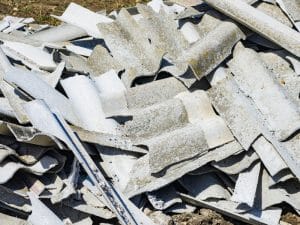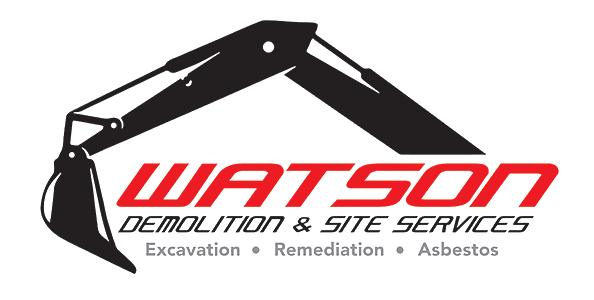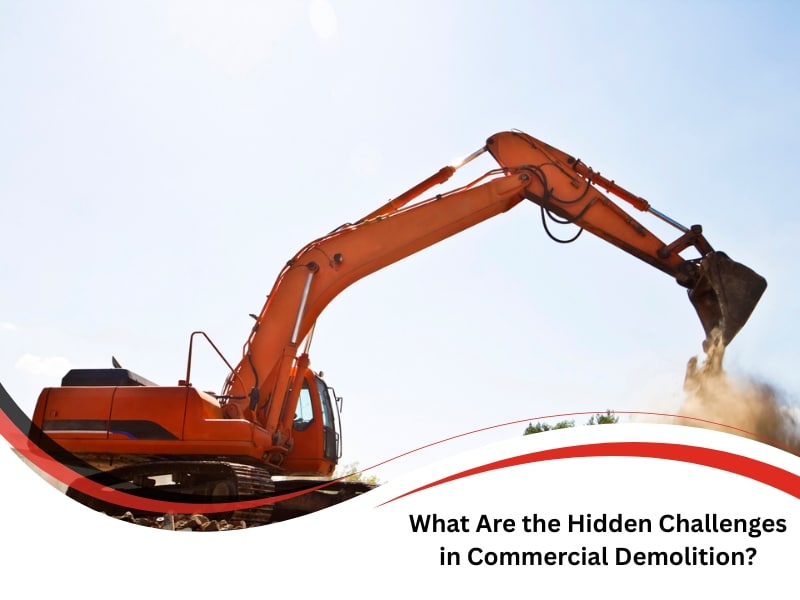Commercial demolition is essential to construction, whether it’s for redevelopment or clearing out outdated structures. While demolition seems straightforward, it involves various complexities and hidden challenges that can impact safety and efficiency. Understanding these challenges is key to project success and ensuring a smooth process from start to finish. This article will dive into some of the often-overlooked challenges in commercial demolition and how you can address them to ensure a safe and effective project.
What are the safety risks in commercial demolition?
Safety is always a top priority in commercial demolition projects, and it’s critical to understand the potential risks involved. The demolition process often exposes workers to various hazards, from falling debris to the risk of structural collapse. Here are the main safety concerns:
- Fall hazards: Demolition involves working at heights, which increases the risk of falls. Proper safety measures, including harnesses and guardrails, are essential.
- Flying debris: When machinery or manual labour breaks down structures, debris can fly in unpredictable directions, posing risks to workers.
- Electrical hazards: Exposed electrical systems can be a serious risk during demolition, especially when they’re not properly deactivated.
- Heavy equipment operation: Operating heavy machinery presents risks of accidents if workers aren’t properly trained.
Safety should always be the top priority in any demolition project. Well-trained personnel, effective safety protocols, and regular inspections are required to ensure a safe working environment.
When do challenges in commercial demolition begin?
Challenges in commercial demolition don’t just pop up when the work begins; they start long before the first tool hits the structure. Proper planning is essential for identifying potential obstacles and preventing surprises during demolition.
Challenge | Description |
Pre-demolition assessments | Essential structural and environmental assessments to avoid unforeseen issues. |
Permitting and compliance | The time-consuming and complex process of obtaining permits and meeting regulations. |
Planning for waste removal | Proper waste disposal planning prevents delays and unexpected costs. |
Identifying hazardous materials | Failure to identify hazardous materials like asbestos can complicate the project. |
Site accessibility | Ensuring adequate site access for machinery, equipment, and workers is crucial. |
Mitigating these issues requires early planning, clear communication with local authorities, and a comprehensive understanding of the structure being demolished.
Can environmental factors complicate demolition?
Environmental factors play a crucial role in commercial demolition and can often complicate an otherwise straightforward project. Adverse weather conditions, local wildlife, and the ecological impact of the demolition process all need to be considered.
- Weather conditions: Heavy rain, extreme heat, or strong winds can delay demolition or affect workers’ safety.
- Noise and dust pollution: Demolition generates a lot of noise and dust, which can impact surrounding businesses and residents. Effective dust suppression methods and noise mitigation are crucial.
- Wildlife protection: Some buildings, such as birds or bats, may house wildlife. These creatures must be safely relocated to comply with environmental regulations.
- Soil contamination: Sometimes, the site may have soil contamination that must be addressed before demolition starts.
- Waste management: Safe disposal of materials and proper waste segregation is important during demolition to avoid harming the surrounding environment, and they remain an ongoing concern in many projects.

Environmental awareness is essential for mitigating any negative impact your demolition might have on the surroundings and ensuring the project complies with relevant regulations.
What are the key risks in commercial demolition projects?
Along with safety and environmental factors, several other risks can hinder commercial demolition projects. These include legal, financial, and operational challenges.
- Legal liability: Legal consequences can follow if something goes wrong on site. Proper documentation, including safety plans and permits, is vital.
- Budget overruns: Unexpected challenges, such as hazardous materials or structural issues, can increase costs.
- Unforeseen structural damage: Hidden issues, like faulty foundations or structural weaknesses, can make demolition more difficult and costly.
- Time delays: Delays in obtaining permits, unexpected weather disruptions, or unforeseen site issues can significantly extend the project timeline.
By considering these risks and emphasising the importance of a demolition plan, you can minimise disruptions and ensure a smoother project from start to finish.
How does asbestos removal impact demolition?
One of the most significant challenges in commercial demolition is dealing with hazardous materials such as asbestos. Before its dangers were known, asbestos was widely used in construction materials. If a building being demolished contains asbestos, special care must be taken.
- Asbestos identification: It’s critical to identify asbestos before demolition begins. Failure to do so can lead to health risks and regulatory violations.

- Specialist removal teams: Asbestos removal requires specially trained professionals to safely handle and dispose of the material.
- Delays and costs: Asbestos removal can be lengthy and costly, adding time and financial strain to the demolition project.
- Health and safety risks: If not appropriately handled, asbestos can pose serious health risks to workers and nearby residents, including the risk of asbestosis from exposure to asbestos dust.
Involving certified asbestos removal specialists early in the planning process ensures that safety and regulatory compliance are maintained throughout the demolition.
What are the risks of unforeseen structural hazards?
Another hidden challenge in commercial demolition is the potential for unforeseen structural hazards. Buildings are often complex, with hidden issues that may not be obvious during initial assessments.
Risk | Description |
Hidden load-bearing walls | Mistaking structural walls for non-structural ones can weaken or collapse the building. |
Outdated building plans | Inaccurate plans may lead to unexpected obstacles during demolition. |
Water damage | Weaken materials increase the risk of structural collapse. |
Poor foundation conditions | Older buildings may have compromised foundations that become unstable. |
Ensuring thorough inspections and planning are done in advance can minimise these surprises and keep your demolition on schedule.
Which best practices mitigate risks in commercial demolition?
While commercial demolition can be challenging, several best practices can help mitigate risks and ensure a smoother, safer project.
- Conduct thorough site assessments: Before beginning, ensure that all evaluations, including structural integrity and environmental factors, are completed.
- Ensure proper safety protocols: Robust safety measures, such as safety gear, training, and clear safety procedures, are essential.
- Hire Experienced Professionals: Work with certified commercial demolition contractors who follow safety protocols, manage risks effectively, and complete the job efficiently, minimising disruptions.
- Clear communication: Establishing clear lines of communication with contractors, stakeholders, and local authorities ensures that everyone is on the same page.
- Stay on top of waste disposal: Plan for waste removal, recycling, and disposal to avoid last-minute complications.
Following these best practices can minimise risks and ensure a successful demolition project.
Conclusion
Commercial demolition is a complex and challenging process that involves much more than simply knocking down walls. Hidden risks, environmental factors, and the potential for unforeseen issues require careful planning and expert handling. Recognising these challenges early on and taking proactive steps to mitigate them can ensure a smooth and successful demolition project.
If you’re looking for reliable, experienced professionals to handle your next demolition project, get in touch with Watson Demolition & Site Services.

